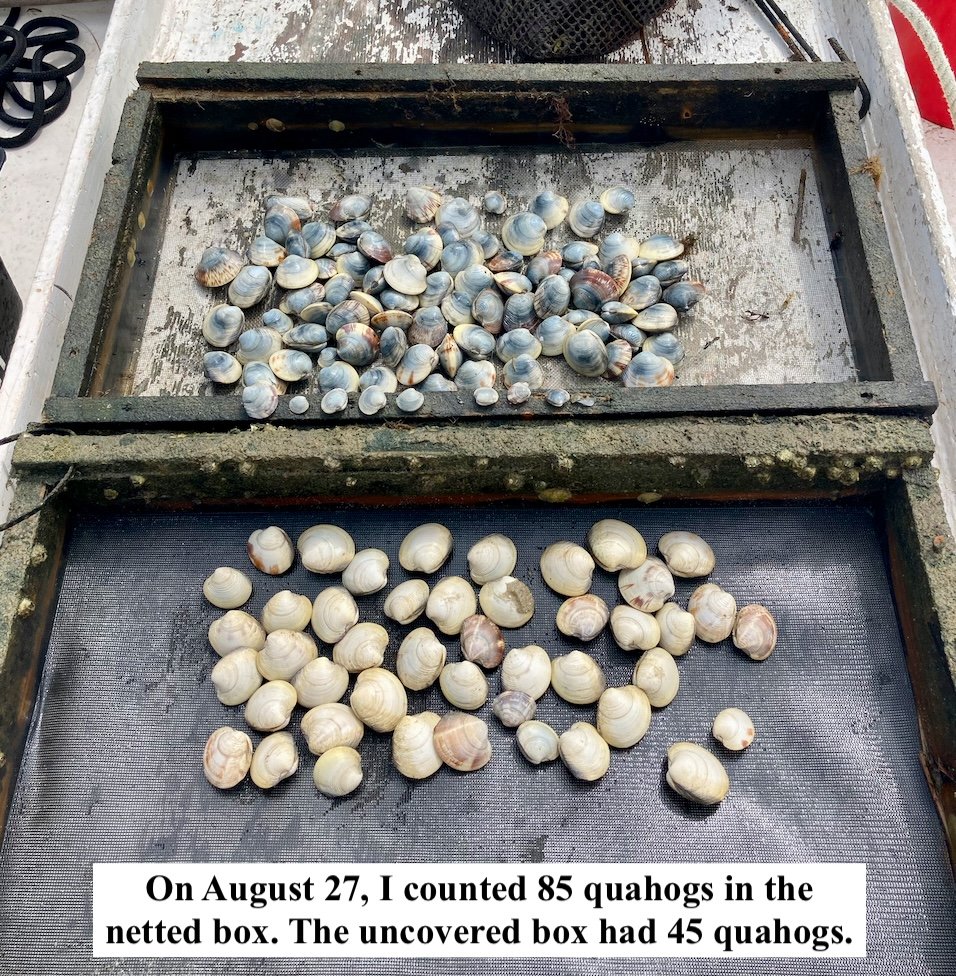Experimenting with Quahog Propagation in Tashmoo Pond
Nelson Sigelman, Tisbury Shellfish Department
October 19, 2023
Nelson Sigelman, Tisbury Shellfish Assistant, described his experiment with quahog seed in Lake Tashmoo. Invasive green crabs have proliferated in our ponds and feed on shellfish seed. There are so many of them that they have impacted the fishery of mature shellfish everywhere. The program of raising and distributing shellfish seed to all the towns through the MV Shellfish Group and supported by the towns could be much more successful, Sigelman posited, if the green crabs weren’t able to destroy so many of those seeds. To watch a condensed video of Nelson’s presentation click in the box to the right.
The inspiration for Nelson’s project came from Bill Walton, Cuff Professor of Marine Science and the Shellfish Aquaculture Program Coordinator at the Virginia Institute of Marine Science. Walton was a young doctoral student at the University of Maryland when he began a three-year study on the effects of green crabs on hardshell clams on Martha's Vineyard. Walton worked closely with Island shellfish constables and retired MVSG Director Emeritus Rick Karney. The recommendations contained in Bill’s 2003 dissertation, “Mitigation of Predation by the European Green Crab on Publically Cultured Hard Shell Clams, were the catalyst for Nelson’s project.
In his dissertation, Walton said, “Larger green crabs are the major predators of hardshell clam seed” and seed under 11mm (.43 inch) “are especially vulnerable to predation.” Walton’s recommendations included releasing larger seed—greater in size than 19 mm (.75 inches), or at least above 11mm “if the former is not practical”—and “conduct intensive trapping only during the first two weeks after seed release (rather than all season) for the most cost-effective method of increasing restoration success.”
In Nelson’s experiment, starting in September 2022, he placed two 1 x 2-foot boxes lined with small mesh window screens on the bottoms and staked them in a shallow section of the east Tashmoo flat. he counted out 100 seed quahogs and placed the seed into each sand-filled box. He put a small section of netting over one of the boxes. They remained untouched over the winter and the 2023 summer. On August 27, he emptied both boxes. The box without a net covering (bottom in photo to the left) had 45 quahogs. Most were a good size. And they were all white. The box with the net (top in photo) contained 85 quahogs, also of a good size and normal coloration.
Nelson and his supervisor, Tisbury Shellfish Constable Danielle Ewart, had planned to repeat the experiment in 2023 with the 100 seed in two boxes and set out another predator exclusion net to protect a portion of the seed sifted from the Tashmoo grow rafts. Unfortunately, they lost much of their seed clams to an algae bloom and crab predation.
In summary, Nelson noted that Tisbury invests considerable time, energy, and money to enhance a natural resource for recreational and commercial harvest. Examining strategies employed by other towns and aquaculturists would be beneficial.
Those attending were interested in learning more and developing island strategies to help improve shellfishing in our ponds.
